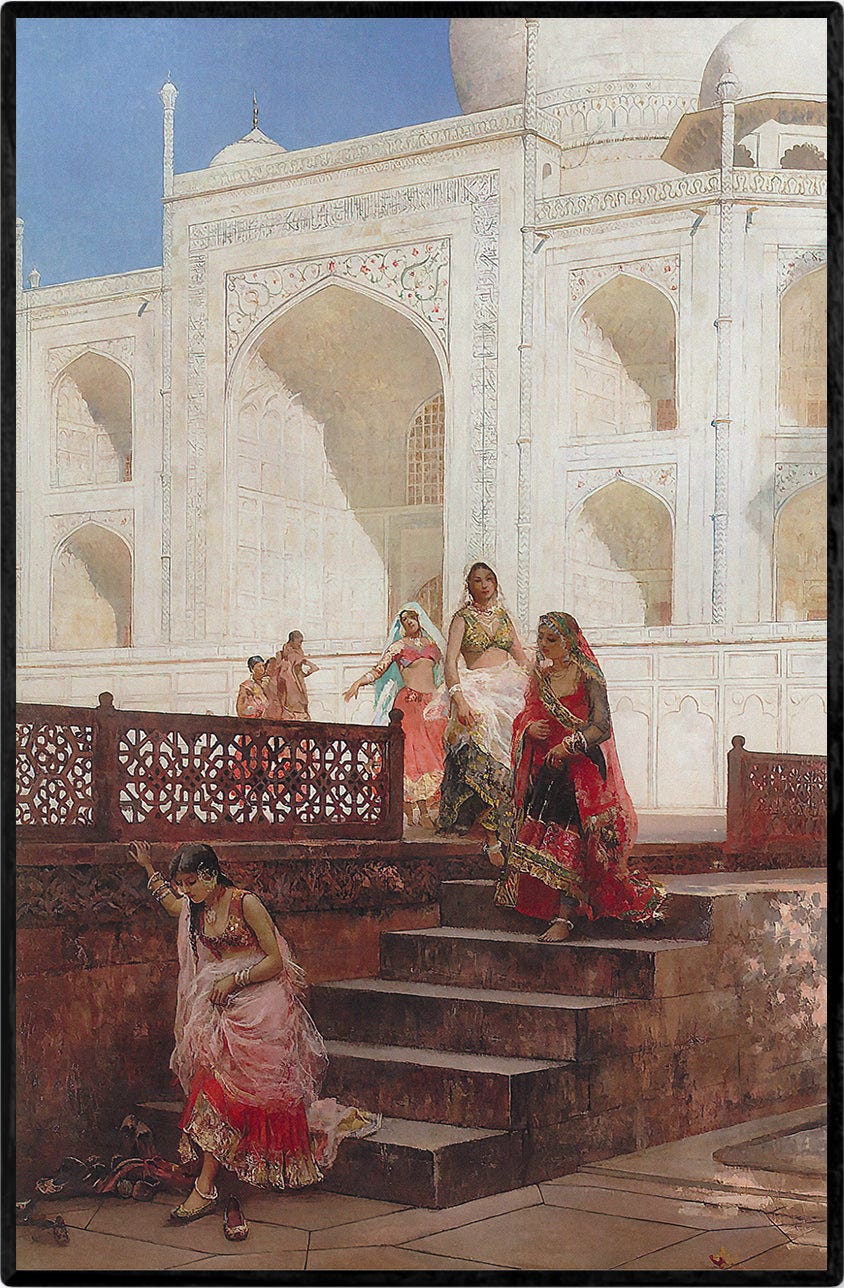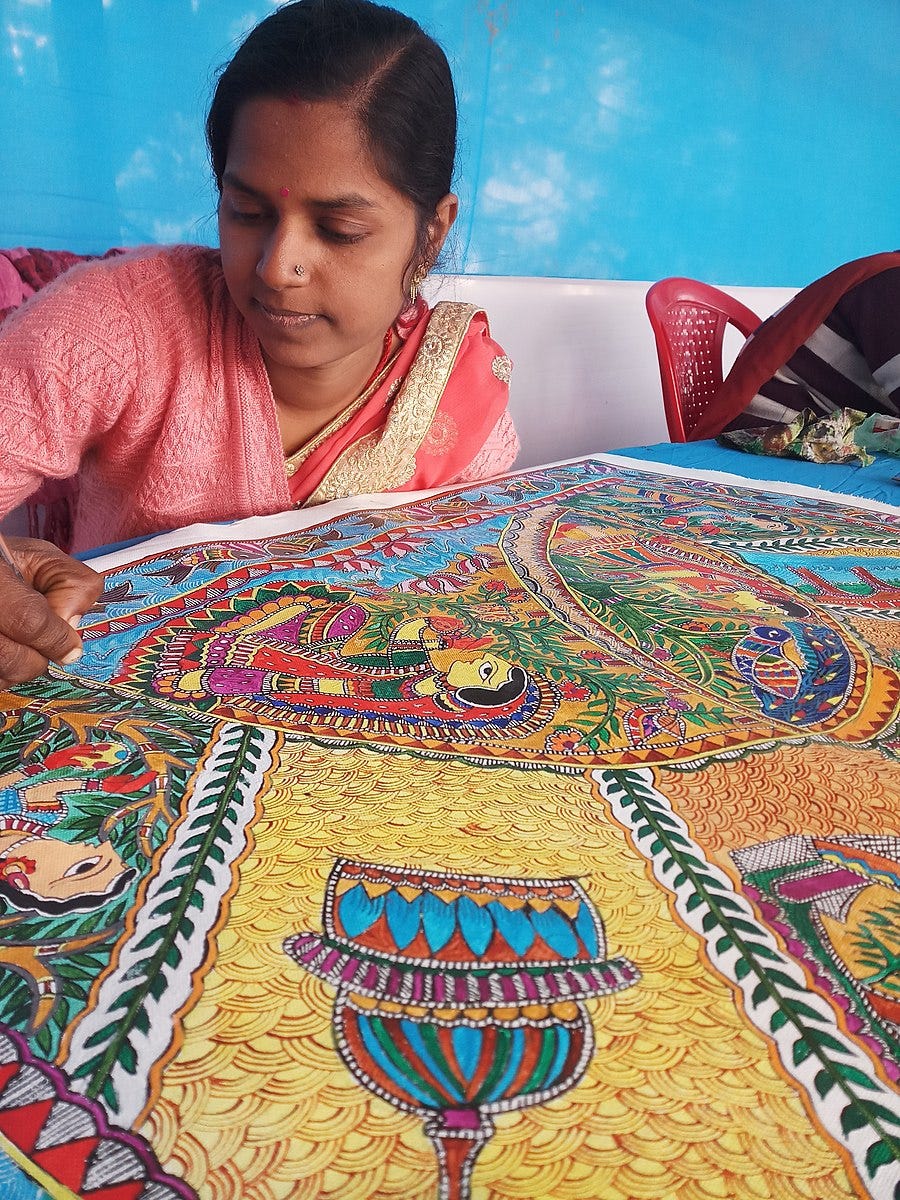Welcome to the Brown History Newsletter. If you’re enjoying this labour of love, please do consider becoming a paid subscriber. Your contribution would help pay the writers and illustrators and support this weekly publication. If you like to submit a writing piece, please send me a pitch by email at brownhistory1947@gmail.com.
Don’t forget to check out our SHOP and our Podcast.

The Forgotten Legacy of Madhubani Art by Ragini Jha
When travellers set foot into Madhubani Station in Bihar, they are greeted by walls adorned with stories of community celebrations, romantic unions, and women gathering to share wisdom. This display of artistic storytelling, created by nearly 200 local artists, goes beyond preserving tradition, it amplifies women's voices, and challenges the misrepresentations that have obscured the depth of Bihar's cultural history.
Teeming with untold stories and artistic traditions, Bihar’s identity as the Land of Enlightenment remains largely unknown. When I tell people my family is Maithil or Bihari, reactions range from a complete lack of recognition to an upsetting dismissal. At best, people ask to be reminded where it is, and at worst, they associate the state with stereotypes about violence and a lack of education. Media portrayals have done little to challenge such misconceptions, with many actors doing exaggerated Bihari accents in movies about people who wield guns and dance in gamchas on the street. Anti-Bihari sentiment continues to be prevalent in India, and this not only weakens national social cohesion, but also undermines the significance of Bihar’s contribution to India’s artistic history.
One overlooked tradition is Madhubani, or Mithila painting, one of the only art forms in the world which is predominantly practised by women and is focused on women’s experiences. Madhubani paintings have been challenging patriarchal norms for centuries, yet remain relatively unknown beyond their birthplace. Interestingly, Madhubani’s signature patterns and colours are probably familiar to many people, and can be seen on various mediums such as textiles and home decor. However, the art form’s deep-rooted connection to Bihar, feminism, and storytelling often go unacknowledged.





